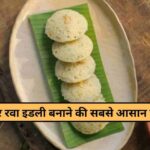Hindi poetry has a rich and vibrant tradition that dates back to centuries. The evolution of Hindi poems has been a fascinating journey, from the traditional forms of expression to the modern and contemporary styles of writing. Over the years, Hindi poetry has adapted to the changing socio-cultural landscape, and has seen a gradual shift in themes, language, and style.
Traditional Hindi poetry, or ‘Bhakti poetry’, emerged during the medieval period, and was characterized by the devotion of the poets to their chosen deity. This form of poetry was often written in the form of devotional songs and hymns, and focused on themes of love, longing, and spiritual awakening. Some of the prominent poets of this era include Kabir, Tulsidas, and Surdas, who made significant contribution to the Bhakti movement through their verses.
As time progressed, Hindi poetry saw the emergence of ‘Riti-Kavya’ or the ‘courtly poetry’ during the Mughal era. This form of poetry was characterized by its ornate language, complex rhythms, and intricate metaphors. The poets of this era, such as Bihari and Keshavdas, were known for their elaborate and elegant compositions, which often revolved around themes of love, romance, and chivalry.
The 19th and 20th centuries witnessed a significant shift in the style and themes of Hindi poetry. With the advent of modernity and the influence of Western literature, Hindi poets started experimenting with new forms of expression. This period saw the rise of ‘Chayavadi’ poets such as Maithilisharan Gupt and Suryakant Tripathi ‘Nirala’, who infused their verses with romanticism, social themes, and emotional depth.
The post-independence era brought about a radical transformation in Hindi poetry, as poets began to delve into themes of social justice, political upheaval, and existential angst. The ‘Prayogvad’ movement, led by poets like Agyeya, Muktibodh, and Nagarjun, marked a departure from the traditional forms of expression, and introduced free verse, experimentation with language, and a more radical approach to poetry.
In the present day, Hindi poems have evolved to encompass a wide range of styles and themes. From the traditional ‘Doha’ and ‘Chaupai’ to the contemporary free verse and experimental forms, Hindi poetry has become a diverse and dynamic art form. Themes such as urban life, identity, gender, and the human condition are increasingly becoming prominent in the works of modern Hindi poets.
The evolution of Hindi poems reflects the changing dynamics of society, culture, and language. From the traditional expressions of devotion and courtly love to the modern explorations of individuality and social change, Hindi poetry has continually adapted to the changing times. The rich legacy of Hindi poetry, with its diversity of styles and narratives, continues to inspire and captivate readers across the world.






